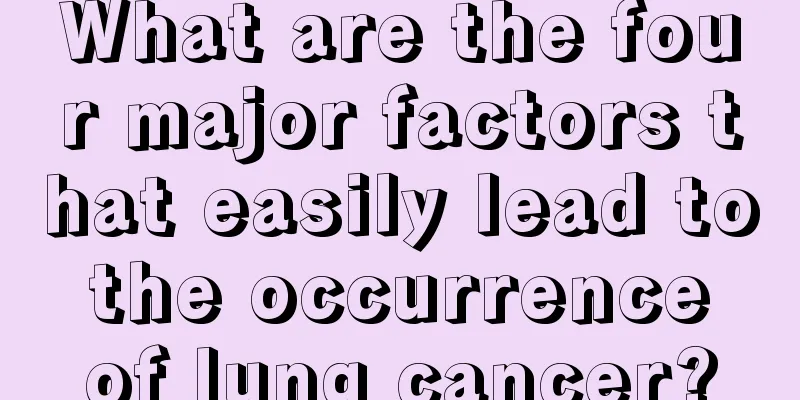The three major metabolic pathways of sugar metabolism

|
There are many chemical substances that make up the human body, among which sugar is an essential organic compound. After entering the human body, sugar will participate in human metabolism. Generally speaking, there are two major metabolic pathways of sugar, mainly catabolism and anabolism. There are three types of catabolism and two types of anabolism, both of which are essential to the human body. Today I will introduce to you in detail the three major metabolic pathways of sugar decomposition metabolism. Two major categories of sugar metabolism: catabolism and anabolism Catabolism: 1. Glycolysis (anaerobic oxidation of sugars) 2. Citric Acid Cycle (Aerobic Oxidation of Sugar) 3. Pentose phosphate pathway Anabolic: 1. Glycogen synthesis (converted into liver glycogen or muscle glycogen) 2. Gluconeogenesis (conversion into non-sugar substances, such as fats and non-essential amino acids) Several major pathways of sugar metabolism Anaerobic glycolysis pathway of sugars (glycolysis pathway): It is the process of breaking down glucose into lactic acid in the absence of oxygen. It is the main pathway for sugar metabolism in the body. The glycolysis pathway consists of three stages: Stage 1: Initiation stage. Phosphorylation and isomerization of glucose: ① Glucose is phosphorylated into glucose-6-phosphate, catalyzed by hexokinase. It is an irreversible phosphorylation reaction, one of the key steps in the glycolysis process, and the starting reaction for glucose to enter any metabolic pathway, consuming 1 ATP molecule. ② Glucose-6-phosphate is converted into fructose-6-phosphate, catalyzed by phosphohexose isomerase; ③ Fructose-6-phosphate is phosphorylated and converted into 1,6-fructose bisphosphate, catalyzed by 6-phosphofructokinase, consuming 1 ATP molecule, which is the second irreversible phosphorylation reaction, the second key step in the glycolysis process, and the most important regulatory point in the glucose oxidation process. The second stage: the cracking stage. 1,6-fructose diphosphate is broken down in half into two molecules of triose phosphate (dihydroxyacetone phosphate and 3-phosphoglyceraldehyde). Catalyzed by aldolase, the two can be interconverted, and ultimately one molecule of glucose is converted into two molecules of 3-phosphoglyceraldehyde. The third stage: redox stage. Release and retention of energy: ① The oxidation of 3-phosphoglyceraldehyde and the reduction of NAD+ are catalyzed by 3-phosphoglyceraldehyde dehydrogenase to generate 1,3-diphosphoglycerate, producing a high-energy phosphate bond and simultaneously generating NADH for the reduction of pyruvate in the seventh step. ②Oxidation of 1,3-diphosphoglycerate and phosphorylation of ADP to produce 3-phosphoglycerate and ATP. Catalyzed by phosphoglycerate kinase. ③3-Phosphoglyceric acid is converted into 2-phosphoglyceric acid. ④2-Phosphoglycerate is dehydrated by enolase and, through molecular rearrangement, generates phosphoenolpyruvate with a high-energy phosphate bond. ⑤ Phosphoenolpyruvate transfers the high-energy phosphate bond to ADP through the catalysis of pyruvate kinase to generate enolpyruvate and ATP. This is an irreversible reaction and the third key step in the glycolysis process. ⑥ Interconversion of enolpyruvate and ketopyruvate. ⑦ Pyruvate is reduced to produce lactic acid. One molecule of glucose can produce two molecules of adenosine triphosphate (ATP) through anaerobic glycolysis, and this process is completed entirely in the cytoplasm. Physiological significance: ① It is an effective measure for the body to obtain energy in an oxygen-deficient or anaerobic state; ② It is an important way for the body to produce energy under stress and meet the physiological needs of the body; ③ Some intermediate products of glycolysis are precursors for the synthesis of lipids, amino acids, etc., and are related to other metabolic pathways. Tissue cells that rely on glycolysis to obtain energy include: red blood cells, retina, cornea, lens, testicles, renal medulla, etc. Aerobic oxidation pathway of sugars: The complete oxidation of glucose into water and carbon dioxide under aerobic conditions is called aerobic oxidation, which is the main way of sugar oxidation. The vast majority of cells obtain energy through aerobic oxidation. The lactic acid produced by muscle glycolysis must eventually be completely oxidized into water and carbon dioxide in the presence of oxygen. Aerobic oxidation can be divided into two stages: The first stage: the cytosolic reaction stage: the glycolysis product NADH is not used to reduce pyruvate to produce lactate, and both enter the mitochondria for oxidation. Phase II: Reaction phase in mitochondria: ① Pyruvate is oxidatively decarboxylated to form acetyl CoA by the pyruvate dehydrogenase complex, which is a critical irreversible reaction. Its characteristic is that the energy released by the oxidation of pyruvate is stored in acetyl CoA in the form of a high-energy thioester bond, which is the beginning of entering the tricarboxylic acid cycle. ②Tricarboxylic acid cycle and oxidative phosphorylation. The tricarboxylic acid cycle is a series of enzymatic reactions carried out in mitochondria, from the condensation of acetyl CoA and oxaloacetate to citric acid to the regeneration of oxaloacetate, forming a cycle process, during which four dehydrogenation oxidations are carried out to produce 2 molecules of CO2, and the 4 pairs of hydrogen removed are oxidatively phosphorylated to produce H20 and ATP. The characteristics of the tricarboxylic acid cycle are: ① The stage from the synthesis of citric acid to the oxidation of α-ketoglutarate is an irreversible reaction, so the entire cycle is irreversible; ② During the circulation transport, each component has neither net decomposition nor net synthesis. However, if a certain component is removed or added, the cycle speed will be affected; ③ The efficiency of acetyl CoA oxidation in the tricarboxylic acid cycle depends on the concentration of oxaloacetate; ④ The NADH and FADH2 produced in each cycle can be oxidatively phosphorylated through the closely related respiratory chain to produce ATP; ⑤ The rate-limiting step of the cycle is the reaction catalyzed by isocitrate dehydrogenase, which is an allosteric enzyme, ADP is its activator, and ATP and NADH are its inhibitors. There are two closely connected respiratory chains distributed on the inner membrane of mitochondria, namely the NADH respiratory chain and the succinate respiratory chain. The function of the respiratory chain is to oxidize the hydrogen removed by metabolites into water, while generating a large amount of energy to drive ATP synthesis. One molecule of glucose is completely oxidized into CO2 and H2O, generating 36 or 38 molecules of ATP. Glycogen synthesis pathway Glycogen is the storage form of sugar in animals. It is a highly branched polymer formed by glucose connected by α-1, 4 and α-1, 6 glycosidic bonds. Most of the sugar ingested by the body is converted into fat (triglycerides) and stored in adipose tissue, and only a small part is stored in the form of glycogen. Glycogen is a rapidly mobilized reserve of glucose. Muscle glycogen can meet the needs of muscle contraction, and liver glycogen is an important source of blood sugar. Glycogen synthase is a key enzyme in glycogen synthesis and is regulated by multiple factors such as G-6-P. The synthesis of glycogen from glucose is an energy-consuming process, and the synthesis of one molecule of glycogen requires 2 ATP. Gluconeogenesis The process of converting non-sugar substances into glucose is called gluconeogenesis, which is the only pathway for the biosynthesis of monosaccharides in the body. The liver is the main organ for gluconeogenesis, and the gluconeogenesis of the kidneys is enhanced during long-term starvation and acidosis. The pathway of gluconeogenesis is basically the reverse process of glycolysis, but it is not a reversible process. The reactions catalyzed by the three key enzymes in the glycolysis process are irreversible, so glucose must be produced by bypassing the three energy barriers of glycolysis through the four key enzymes of gluconeogenesis (glucose-6-phosphatase, fructose-1,6-bisphosphatase, pyruvate carboxylase, and phosphoenolpyruvate kinase). Its physiological significance is: ① It serves as an important source of blood sugar supplement to maintain constant blood sugar level. ②Prevent lactic acidosis. ③Assist in amino acid metabolism. Pentose phosphate pathway It occurs in the cytoplasm and exists in tissues such as the liver, breast, and red blood cells. Its physiological significance is: ① Provide 5-phosphate ribose for the biosynthesis of nucleotides and nucleic acids. ② Provide reducing power in the form of NADPH, participate in various metabolic reactions, maintain the reduced state of glutathione, etc. Uronate pathway Its physiological significance lies in the generation of active glucuronic acid (UDP glucuronic acid), which is an important binder in biotransformation and can bind to a variety of metabolites (bilirubin, steroids, etc.), drugs and poisons; it is also a donor of glucuronic acid, which is an important component of proteoglycans, such as chondroitin sulfate, hyaluronic acid, heparin, etc. |
>>: Is it better to have a high or low basal metabolism
Recommend
Will parents' severe myopia be passed down to their children?
High myopia of parents will be passed on to their...
What are the methods for hemostatic bandage of open wounds?
The chance of accidents happening in life is very...
What's wrong with my eyes hurting and afraid of light?
When your eyes are painful or you are afraid of l...
Prevention measures for side effects of commonly used bone cancer drugs
Chemotherapy is one of the important methods for ...
Are eels poisonous?
I believe that everyone has eaten various kinds o...
The efficacy and use of rat bags
The mouse bag, also known as the rice bag, is a p...
Six simple methods of traditional Chinese medicine foot soaking
Foot soaking is very common. It is very helpful t...
What are the reasons for the continued worsening of angina pectoris?
If patients with angina pectoris are not treated ...
How to correctly view the positive of mycoplasma and chlamydia
My friend has been married for two years and rece...
How should lung cancer patients eat? Lung cancer patients should pay attention to these 6 points in their diet
There are more and more types of cancer in societ...
What to do if your mouth is dry in autumn
The weather in autumn is dry and windy, which mak...
Why is lung cancer mostly in the late stage? Pay attention to these three aspects
Many people are already in the late stages of lun...
Are black bras harmful to the body?
Nowadays, every girl wears a bra. Bras are partic...
What diseases are likely to be complicated by lymphoma
Lymphoma is a malignant tumor originating from th...
Should I tear off the plastic film on the mattress?
When you buy a new mattress from outside, you wil...









